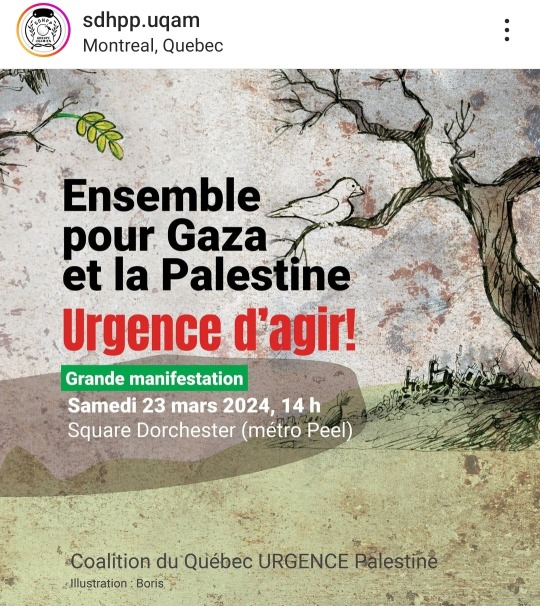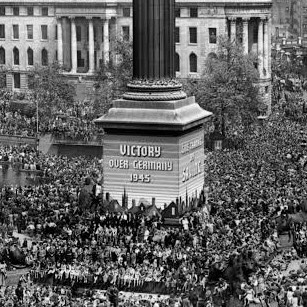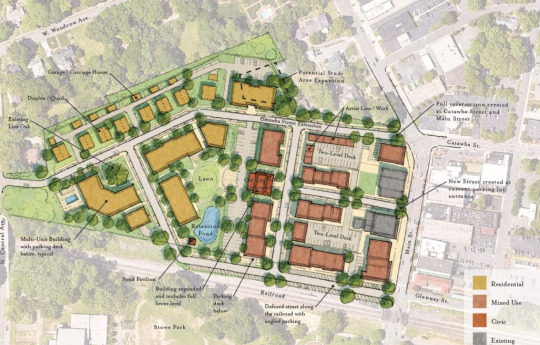#square dorchester
Explore tagged Tumblr posts
Text


Fall and winter from the same point of view.
Taken from my book 'Saisons de Montréal'
#drowsteramericas#montréal#saisons#mtl#québec#canada#seasons#winter#wonderland#square dorchester#saisonsdemontréal
3 notes
·
View notes
Text

Dorchester Square Downtown Montreal
#montreal#montrealpics#montréal#montrealmoments#montreal city#montreal photography#montreal life#montrealmonamour#mtl#montrealjetaime#montrealstreets#montrealstreetphotography#montrealstreetart#montrealstreet#streetsofmontreal#montrealsquares#dorchester square#montrealwinter#montrealsnow
27 notes
·
View notes
Text
The fabulous Queen Mother Square in Poundbury, Dorset

Classic architecture is being revived on the edge of Dorchester, UK
#Queen Mother Square#Poundbury#Dorset#Conor Lynch#UK#architectural revival#planned town#Dorchester#classic design
14 notes
·
View notes
Text
Museum of Bad Art
O Moba (Museum of Bad Art, ou Museu da Arte Ruim) foi criado quando o vendedor de antiguidades Scott Wilson encontrou, em uma lixeira da cidade, a pintura do retrato de uma senhora de vestido azul, em 1994, localizado na região metropolitana de Boston, nos EUA, abriga o único museu do mundo dedicado a exibir obras de arte que jamais estariam nas casas tradicionais de exposição. Letícia Mori –…

View On WordPress
#1996 pintura Eileen#A Mariachi in Tiananmen Square Um Mariachi na Praça Tiananmen#acervo exibições itinerantes#An inside look at how the Museum of Bad Art is made ART inc Rhode Island PBS#arte ruim demais para ser ignorada#autor anônimo#Autor desconhecido#autora da obra# Jazz Hands Mãos de Jazz#único museu do mundo obras de arte#book livro 2008#brilho verde-vômito#casas tradicionais de exposição#câmera de segurança falsa fonte Comic Sans#Charlie and the Sheba aplicativo Face Swap#coleção de arte feia#Conheça as obras primas do Museu da Arte Feia#covers heavy metal cantor Pat Boone#curador-chefe Michael Frank#Deadham Community Theatre#descrição quadro de paisagem Greenscape#descrição tinta acrílica mofo sobre tela#doações#Dorchester Brewing Co.#entidade não tem fins lucrativos#Estátua da Liberdade Museum of Bad Art#eventos prêmio IgNobel#excelente disco Mary Schneider#famosa foto de Jeff Widens protesto China 1989#figuras humanoides cachorro dog
0 notes
Text
UQàM's SDHPP in Montreal is holding an EMERGENCY PROTEST and needs YOUR ATTENDANCE. The situation in Ghazzah has gone from catastrophic to imminently deadly for millions.
Please take the time out of your day this afternoon and attend.
It is taking place at Dorchester Square near metro Peel, at 2PM today.


Their demands:
- An immediate ceasefire and the free movement of aid in Ghazzah
- A stop to all exports of military supplies - direct or indirect - towards the zionist occupation.
- An end to the 19 year blockade on Ghazzah.
225 notes
·
View notes
Text
I am getting flak for my opposition to the north-south rail link and want to clarify: The commuter rail isn’t set up to move you from point A to point B unless point B is Boston. This is because of the economy of scale. Given the practical reality, you should probably drive most short trips in MA unless you live in Boston because very few single town pairs have sufficient gravity to warrant a mass transit solution. This isn’t to say that more or better trains aren’t an overall good, but a system that is overbuilt is going to limit its own ability to effectively serve the public, and cars are, practically speaking, a more autonomous and therefore efficient mode of transport in zones of uniform low density.
When greater Boston has trains and buses that serve significantly more demand than they do now, a north south rail link could be a logical next step, but for right now the corridors that would represent the greatest increase in T Benefit are Everett, chelsea and SoWa/Roxbury/Dorchester and it’s not close.
The tool I have to measure this is a gravity model, which doesn’t give you an absolute number of trips but can give you a comparison between two city pairs.
Population (x) x population (y)/distance^2
Let’s look at some pairs:
Boston-Hingham
Boston population (in thousands): 675
Hingham population (in thousands): 24
Distance: 17 miles
Score: 56
Boston-Concord
Concord population (in thousands): 18
Distance: 18 miles
Score: 37.5
Concord-Hingham
Distance: 31 miles
Score: 0.44
These three pairs show that while only slightly fewer people are likely to travel to boston from concord than hingham, people are 100 times less likely to make a trip from hingham to concord than boston. These are fairly characteristic of commuter rail communities, and transit should reflect that. The commuter rail is organized to get people to boston for a reason. Now, compare that to boston-cambridge or boston-brookline.
Brookline population: 63,000.
Distance: 4 miles
Score: 2,657
Cambridge population: 118,000
Distance: 3 miles
Score: 8,836
These are well connected, peer urban areas with light or heavy rail in proportion to their weight. But now look at Everett:
Population: 49,000
Distance: 4 miles.
Score: 2,064
logically, It should have nearly as much transit as Brookline, which has two and a half legs of the green line. It doesn’t, although the T is fixing this with increased bus connectivity. SoWa/Roxbury/Dorchester is the hardest one to look at here because it’s actually part of boston, meaning I have to change some assumptions about distance and population. I have been up to this point using government center as my boston location, and I’ll pick franklin park as my location for dorchester. I’ll be subtracting the dorchester and roxbury populations from the boston population to get an estimate.
Dorchester pop: 100,000
Roxbury Pop: 60,000
Adjusted Boston Pop: 515,000
Distance: 4.8miles
Score: 3,576
Now, depending on location, these residents might be served by the red or orange lines, but the scores are much higher and there is still nothing like the connectivity of brookline or cambridge. This is a major result of boston’s historic redlining, which I’ve discussed before.
These communities, with scores in the thousands, are desperate for better transit. There are ten thousand trips made on that kind of connection for each trip made between Lowell and Foxborough, and until those communities, who are disproportionately minority, have access to good transit, I won’t worry about the rail link.
There’s a reason this is called a gravity model: it’s an inverse square law, which can be generalized with calculus to cover a whole two dimensional field. Someone who is better at math than me probably already has mapped MA in this way. But the force of gravity between any two communities outside of Worcester-Boston-Springfield-Providence is probably going to be weak, or at least much weaker than the gravity pulling those commuters towards Worcester-Boston-Springfield-Providence.
So with these numbers in mind, who is the rail link for? Which communities are driving the demand for large scale movement of people not to Boston, but past it? Why should the MBTA take on the entire downtown MPA and MASSDot and the Legislature and try to build through the very land government center is on to link north station to south? Why not instead build from Fields Corner to Back Bay and give transit access to one of the most populous transit deserts in the city? Or From Maverick To Malden by way of Chelsea and Everett? It’s just such a low priority for me, and I think it should be for you too.
18 notes
·
View notes
Text
On 8 May 1945, the VE Day, a national holiday, was declared in Britain, celebrating the defeat of Nazi Germany and the end of World War II in Europe.







“ON 8 MAY 1945 THE crowds around the Victoria memorial outside Buckingham Palace were greater than they had been for the Coronation. Winston Churchill arrived in an open car, briefly spoke to the crowd, then entered the palace for lunch with the King and Queen. The people wanted more. ‘We want the King’ came the cry. The royal family emerged on to the balcony to tumultuous applause, eight times in total. The King wore his naval uniform and Princess Elizabeth was in her ATS uniform. Each time the people saw them, a great cheer went up – then they began to sing ‘For he’s a jolly good fellow’. Churchill later appeared and gave the ‘V’ sign to the crowds.
That night, fourteen-year-old Princess Margaret suggested they venture out on to the street. Swept up in the excitement of the moment, the King and Queen agreed. Margaret and Elizabeth, still proudly wearing her ATS uniform, along with fourteen or so others including Madame de Bellaigue, Crawfie and some Guards officers set off together, escorted by an equerry. Afraid of being recognised, Elizabeth pulled her uniform cap low over her eyes, but one of the officers declared he would not be seen with another officer who was improperly dressed, so she had to adjust her cap. All around them, people were dancing, crying, hugging and kissing and the party wandered to Parliament Square, then Piccadilly and as far as Park Lane, before visiting the Ritz and Dorchester Hotels, crossing Green Park and returning to the palace. For much of the route, they were swept up by the crowds and had to run. After repeated failures to go out incognito the Princess was finally free and unrecognised. All around her were, as she recalled, ‘lines of people linking arms and walking down Whitehall and all of us were swept along by tides of happiness and relief. They danced too – doing the ‘Lambeth Walk’ and the ‘Hokey-Cokey’. They even stood outside the palace and cried ‘We want the King’ with the crowds. It was a brief and exhilarating moment of freedom.”
Young Elizabeth by Kate Williams
#king george vi#queen mother#princess elizabeth#princess margaret#we four#winston churchill#VE day#wwii#lest we forget#anecdote
79 notes
·
View notes
Text
Need everyone to witness what I experienced on dorchester square
7 notes
·
View notes
Text

Cathédrale Marie-Reine-du-Monde (1894) off Dorchester Square, Montreal, Quebec, Canada, is a scaled-down replica of Saint Peter's Basilica in Rome. The 13 statues along the facade represent the patron saints of the various parishes of Montreal.
4 notes
·
View notes
Text
its should NOOOOOOT take 2 hours to get from Dorchester to harvard square
2 notes
·
View notes
Text

Dorchester Square
#montreal#montrealpics#montréal#montrealmoments#montreal city#montreal photography#montreal life#montrealmonamour#mtl#montrealjetaime#montrealstreet#montrealstreets#montrealstreetphotography#montrealstreetart#streetsofmontreal#montrealwinter#montrealsnow
18 notes
·
View notes
Text
Who Are The 5 Best Roofing Companies in Gallatin, TN 37066?

Roofing Contractor
4 Square Roofing
405 Dorchester Pl
Gallatin, TN 37066
Phone: (615) 582-1639
Email: [email protected]
Web: https://4squareroofing.org
Google: https://g.page/4squareroofing
Facebook: https://www.facebook.com/4squareroofing
Twitter (X): https://www.twitter.com/4squareroofing
Instagram: https://www.instagram.com/4_square_roofing
LinkedIn: https://www.linkedin.com/in/4squareroofing
YouTube: https://www.youtube.com/c/4squareroofing
Reddit: https://www.reddit.com/4squareroofing
Medium: https://www.medium.com/4squareroofing
“NASHVILLE NATIVE ROOFING CONTRACTORS COMMITTED TO RESTORING OUR COMMUNITY, ONE ROOF AT A TIME!” - 4 Square Roofing | Four Square Roofing | 4 Square Roofing, LLC
Gallatin New Roof Installation
Gallatin Roof Replacement
Gallatin Roof Repair
Gallatin Roof Inspection
Gallatin Residential Roofing
Gallatin Commercial Roofing
Gallatin Roof Storm Damage
Gallatin #1 Roofing Company
#asphalt shingle roof repair#construction#gallatin roofing service#gallatin roofing company#gallatin roofing contractor#gallatin roofing#commercial roofing#gallatin home improvement pros#hendersonville roofing company#home improvement#shingle roof#roof coating#tennesseeroofers#roofing company#emergency roofing#affordable gallatin roofing#best roofer near me 37066#cheap roof repair#best gallatin roofer#shingles repair#leaking roof repair#diy roof repair#new roof installation#quality new roof installation#quality roofing#sumner county roofing company#sumner county roofing contractor#best sumner county roofing#roof#roofrs
2 notes
·
View notes
Text







Went to Montreal for the first time yesterday
Had fun, we mostly walked in circles of a few blocks radius from Dorchester Square. I didn’t get to do too much sightseeing given that it was raining on and off so my friends usually wanted to duck in and out of different shops. If I get a chance to go back, I would like to see some of the museums in the area.
2 notes
·
View notes
Text
Two of Quebec's largest unions joined a demonstration in downtown Montreal in the snow on Saturday in support of the Palestinian people. The march was largely focused on a demand for an Israeli ceasefire in Gaza. While previous demonstrations in Montreal were mostly organized by active pro-Palestine organizations and their supporters, Saturday's event was much wider in scope. The focus on Saturday was providing food and supplies to a starving population in Gaza and an immediate ceasefire from the state of Israel coupled with a long-term peace plan. The FTQ and CSN unions joined members of Quebec Solidaire and other groups in a march that began in Dorchester Square.
Tagging: @politicsofcanada
143 notes
·
View notes
Text
Things to do in Mayfair
Mayfair ought to be at the top of your list if you’re traveling to London and want to find a location where luxury, culture, and history all coexist harmoniously. Mayfair, which is in the center of the city, is well-known for its upscale stores, sophisticated streets, and amazing restaurants. Whether you’re after a relaxing afternoon or an exciting day full of exploration, here’s a list of things to do in Mayfair that will make your visit unforgettable.

A Stroll Through History:
Mayfair’s story is as captivating as its present. Developed in the 17th and 18th centuries on the site of the annual May Fair, from which it derives its name, the district quickly became a haven for the aristocracy. Grand townhouses, elegant squares, and meticulously manicured gardens sprang up, creating the distinctive character that endures to this day. Walking through Mayfair is like stepping back in time, with each street whispering tales of dukes, duchesses, and the glittering social events that shaped the area’s identity.
Luxury Shopping: A Retail Paradise:
Mayfair is a shopper’s dream, a veritable paradise for those seeking the finest brands and exclusive boutiques. Bond Street, renowned worldwide, is home to flagship stores of iconic fashion houses, from Chanel and Dior to Hermès and Burberry. Here, you can find the latest haute couture, exquisite jewelry, and coveted accessories. But Mayfair’s shopping scene extends beyond Bond Street. Mount Street boasts a collection of designer boutiques, while Savile Row is the undisputed home of bespoke tailoring, where master craftsmen create impeccably tailored suits. For art lovers, Cork Street is lined with galleries showcasing contemporary and modern art.
A Culinary Journey: From Michelin Stars to Afternoon Tea:
Mayfair’s culinary landscape is as diverse as it is refined. The district boasts an impressive array of Michelin-starred restaurants, where world-renowned chefs craft culinary masterpieces. From innovative tasting menus to classic fine dining, Mayfair offers a gastronomic experience to tantalize every palate. But Mayfair isn’t just about haute cuisine. It’s also home to charming cafes, traditional pubs, and elegant tea rooms, perfect for a leisurely afternoon tea or a quick bite. Don’t miss the chance to experience the quintessential British tradition of afternoon tea at one of Mayfair’s iconic hotels, such as The Ritz or The Dorchester.
Our More Article
Trevone Natural Sea Pool
Exploring Chapel Rock Pool
A Complete Travel Guide to Skegness Beach
Downderry Beach Cornwall
Arts & Culture: A Feast for the Senses:
Mayfair is a hub of arts and culture, offering a wealth of experiences for those seeking intellectual and artistic stimulation. The Royal Academy of Arts, located on Piccadilly, hosts world-class exhibitions throughout the year. Several art galleries showcase works by established and emerging artists. For those interested in history and heritage, the Handel & Hendrix in London museum offers a fascinating glimpse into the lives of two musical giants who once resided in Mayfair.
Green Spaces: An Oasis of Tranquility:
Despite its central London location, Mayfair boasts several green spaces that provide a welcome respite from the city’s hustle and bustle. Hyde Park, one of London’s largest royal parks, borders Mayfair and offers a vast expanse of greenery for walking, cycling, or simply relaxing by the Serpentine Lake. Green Park, located adjacent to Buckingham Palace, is another tranquil oasis, perfect for a stroll or a picnic. Within Mayfair itself, several squares, such as Grosvenor Square and Berkeley Square, offer beautifully landscaped gardens and a sense of serenity.
Hidden Gems: Discovering Mayfair’s Secrets:
Beyond the grand avenues and well-known landmarks, Mayfair hides a wealth of hidden gems waiting to be discovered. Explore the charming Shepherd Market, a network of narrow streets and alleyways lined with boutiques, restaurants, and pubs. Discover the hidden courtyards and gardens tucked away behind the grand facades. Venture into the independent shops and galleries that add a unique character to the district. These hidden corners of Mayfair offer a glimpse into the area’s authentic charm and provide a more intimate experience.
Where to Stay: Indulgence and Luxury:
Mayfair is home to some of London’s most prestigious hotels, offering unparalleled luxury and impeccable service. From iconic grand hotels like The Ritz and The Dorchester to boutique hotels with a more contemporary feel, Mayfair provides a range of accommodation options to suit every taste and preference. These hotels often boast Michelin-starred restaurants, elegant bars, and luxurious spas, ensuring a truly indulgent stay.
A Day in Mayfair: A Suggested Itinerary:
To help you make the most of your time in Mayfair, here’s a suggested itinerary for a day of exploration:
Morning: Start your day with a stroll along Bond Street, browsing the window displays of the designer boutiques. Indulge in a luxurious breakfast at a charming cafe.
Midday: Visit the Royal Academy of Arts and immerse yourself in the world of art. Explore the galleries on Cork Street.
Afternoon: Enjoy a traditional afternoon tea at The Ritz or The Dorchester. Take a leisurely walk through Hyde Park or Green Park.
Evening: Indulge in a Michelin-starred dining experience at one of Mayfair’s renowned restaurants. Enjoy a drink at a stylish bar.

Tips for Visiting Things to Do Mayfair:
Dress Code: While not strictly enforced everywhere, a smart casual dress code is generally recommended, especially for fine dining and afternoon tea.
Reservations: Reservations are highly recommended for Michelin-starred restaurants and afternoon tea, especially during peak season.
Transportation: Mayfair is well-connected to the rest of London by public transportation. Several Underground stations serve the area, and buses and taxis are readily available.
Budget: Mayfair is a luxury district, and prices can be high. Be prepared to spend accordingly, especially for shopping and dining.
Walking: Walking is the best way to explore Mayfair and discover its hidden gems.
Mayfair: A Timeless Elegance:
Mayfair is more than just a place; it’s an experience. It’s a celebration of elegance, a testament to refined taste, and a journey into a world of timeless charm. Whether you’re indulging in luxury shopping, savoring culinary delights, exploring art and culture, or simply strolling through its elegant streets, Mayfair offers a unique and unforgettable experience. So, immerse yourself in the magic of Mayfair and discover the allure of London’s most exclusive district. Continue Reading
Here are some FAQs about Things to do in Mayfair, London
Q: What is Mayfair known for?
A: Luxury shopping, fine dining, elegant hotels, and its historical significance.
Q: Where is Mayfair located?
A: In the heart of London, England.
Q: What are some famous shopping streets in Mayfair?
A: Bond Street, Mount Street, and Savile Row.
Q: What kind of shops are in Mayfair?
A: High-end designer boutiques, bespoke tailors, art galleries, and jewelry stores.
Q: Are there any Michelin-starred restaurants in Mayfair?
A: Yes, Mayfair has a high concentration of Michelin-starred restaurants.
Q: What is afternoon tea like in Mayfair?
A: It’s a luxurious experience, often taken at iconic hotels like The Ritz or The Dorchester.
Q: What are some cultural attractions in Mayfair?
A: The Royal Academy of Arts and the Handel & Hendrix in London museum.
Q: Are there any parks in Mayfair?
A: Hyde Park and Green Park border Mayfair. There are also several garden squares within the district.
Q: What’s the best way to get around Mayfair?
A: Walking is ideal. Mayfair is also served by several Underground stations.
Q: Is Mayfair expensive?
A: Yes, Mayfair is a luxury district, and prices for shopping, dining, and accommodation tend to be high.
Q: What is Shepherd Market?
A: A charming area of narrow streets and alleyways with boutiques, restaurants, and pubs.
Q: What’s a typical dress code in Mayfair?
A: Smart casual is generally recommended, especially for fine dining and afternoon tea.
#ThingstodoinMayfair#ThingstodoinMayfairwithkids#Thingstodoinmayfairtoday#Thingstodoinmayfairforcouples#ItineraryPlans
0 notes
Text
Town extensions with urbanism are a great idea

From Poundbury to the Pearl District, many of the most successful new urban projects have been extensions of a town or city. They take existing urbanism and build on it by expanding a walkable street network. Here are 10 examples of new urban plans and developments—eight in the US and two in England—that extend the street grid of a city or town:
Woodstock, Georgia
Pearl District in Portland, Oregon
Poundbury, Dorchester, England
Frisco Square, Frisco, Texas
Addison Circle, Addison, Texas
Bastrop, Texas
Kentlands and Lakelands, Gaithersburg, Maryland
South Main, Buena Vista, Colorado
Tregunnel Hill, Cornwall, England
Belmont, North Carolina
Read more.
#new urbanism#urbanism#urban design#cities#walkability#design#georgia#towns#oregon#england#texas#maryland#colorado#north carolina
0 notes